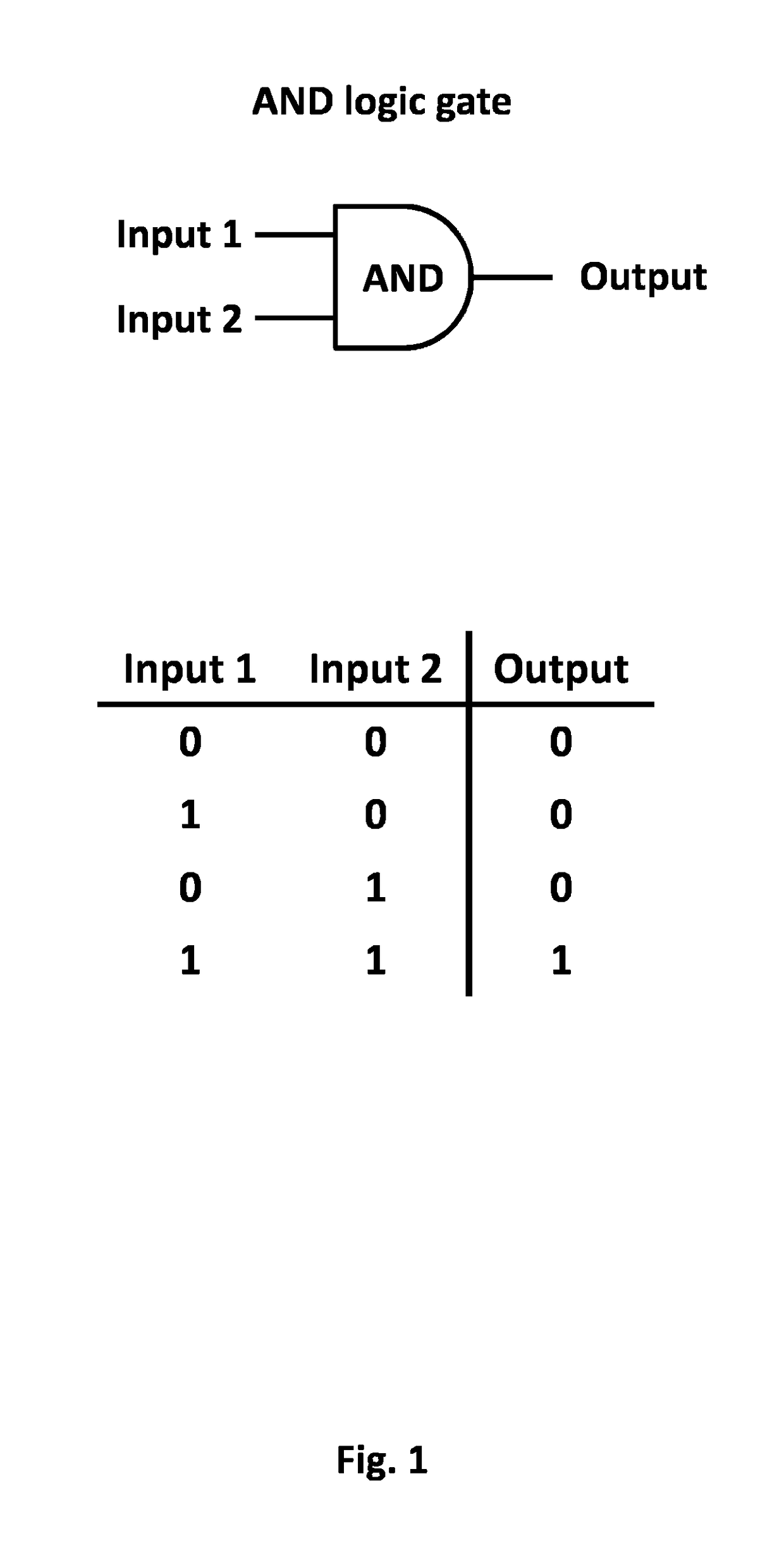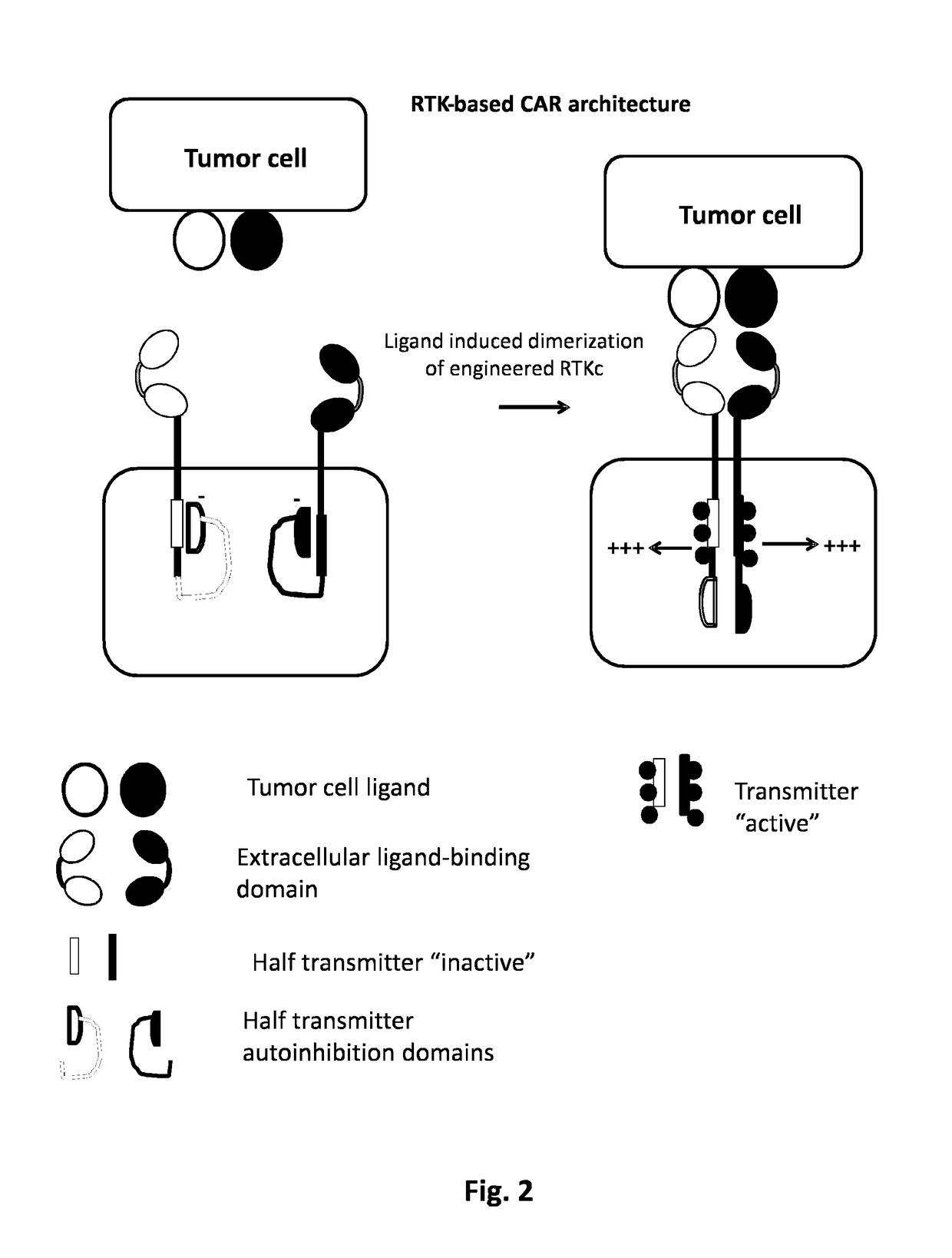Method of engineering multi-input signal sensitive t cell for immunotherapy
a multi-input, signal-sensitive technology, applied in the direction of genetically modified cells, peptide sources, drug compositions, etc., can solve the problems of inability to provide prolonged expansion and anti-tumor activity in vivo, cancer cells are unstable, and cells may no longer possess the target antigen
- Summary
- Abstract
- Description
- Claims
- Application Information
AI Technical Summary
Benefits of technology
Problems solved by technology
Method used
Image
Examples
example 1
Control of T Cell Activation Through CAR-Mediated Regulation of CARMA1 Protein
[0191]The scaffold protein caspase recruitment domain-containing membrane-associated guanylate kinase protein-1 (CARMA1) is a member of the MAGUK family of kinases (Roche, Ramadas et al. 2013). CARMA1 constitutes a crucial signalosome for the transmission of the T cell Receptor (TCR) signaling and in general for T cell activation. The intracellular CARMA1 concentration is a key element in the regulation of its activity. An enhancement of the CARMA1 signaling has been observed at low and moderate concentrations while a decrease of the activity has been reported at high concentration dues to the sequestration of the different components away form each other (biphasic response). Following TCR engagement, CARMA1 recruits different proteins forming a multi-protein complexes that finally can activate two different signaling cascade: NF-κB and c-jun N-terminal kinase (JNK) (Blonska and Lin 2009).
[0192]CARMA1 is c...
example 2
Generation of Two Types of LCKs to Inhibit and to Stimulate the Signaling Cascade
[0196]LCK (NCBI Reference Sequence: NP_005347.3) is one of the first molecules to be activated following TCR engagement (Borger, Filby et al. 2013; Borger, Zamoyska et al. 2013; Brownlie and Zamoyska 2013). LCK is constitutively active in T cell maintaining a low level of phosphorylation of the ζ chain of CD3 associated to TCR. LCK binds to the cytoplasmatic domain of CD8 following the interaction between TCR and peptide-MHC, the co-receptor CD8 drives LCK in proximity of the ζ chain of CD3 associated to TCR. The targets of LCK are the tyrosine residues on the ITAM of the TCR associated ζ chain of CD3 but also CD3δ chain, CD3ε chain and ZAP70. The phosphorylation of ZAP70 promotes a conformational change which actives its kinase activity leading to the phosphorylation of LAT (adaptor molecule linker for activation T cells). In turn Lat will recruit multiple downstream adaptors and signaling molecules.
[0...
example 3
Use of Environmental Condition (Hypoxia) to Control HIF1α (a.a. 380-603) mcCAR Fusion Surface Presentation—mRNA Delivery
[0200]The schematic functioning of the HIFα-system is depicted in FIG. 22 at both conditions (normoxia and hypoxia). In FIG. 23 is shown different CAR architectures (single-chain and multi-chain). In the following experiments, the multi-chain CAR conformation was used.
Constructs and mRNA Preparation
[0201]All constructs originated from the pCLS24707 (SEQ ID NO: 1) which encode the α-chain (SEQ ID NO: 2), β-chain (SEQ ID NO: 3) and γ-chain (SEQ ID NO: 4) of the multichain CAR (mcCAR). The sequence coding for the amino acids 380 to 603 of the Hypoxia-inducible factor 1-alpha (HIF1 accession number Q16665, (SEQ ID NO: 5) was synthesized, in two parts, de novo (GeneCust) and cloned, using classical molecular biology technics, downstream the α-chain, using a short -GS-linker (SEQ ID NO: 6) leading to pCLS26580 (SEQ ID NO: 7).
[0202]All individual chains were amplified by ...
PUM
| Property | Measurement | Unit |
|---|---|---|
| Fraction | aaaaa | aaaaa |
| Fraction | aaaaa | aaaaa |
| Fraction | aaaaa | aaaaa |
Abstract
Description
Claims
Application Information
 Login to View More
Login to View More - R&D
- Intellectual Property
- Life Sciences
- Materials
- Tech Scout
- Unparalleled Data Quality
- Higher Quality Content
- 60% Fewer Hallucinations
Browse by: Latest US Patents, China's latest patents, Technical Efficacy Thesaurus, Application Domain, Technology Topic, Popular Technical Reports.
© 2025 PatSnap. All rights reserved.Legal|Privacy policy|Modern Slavery Act Transparency Statement|Sitemap|About US| Contact US: help@patsnap.com



